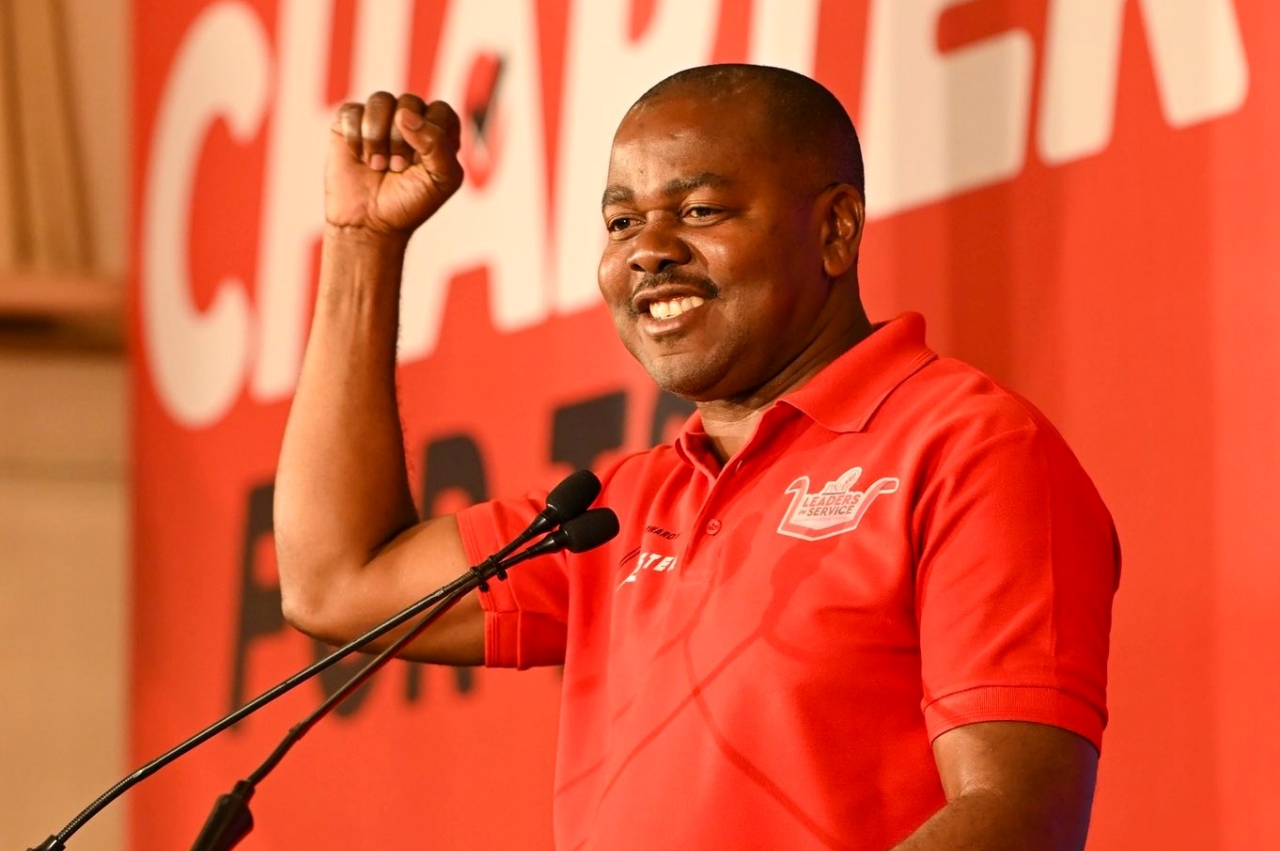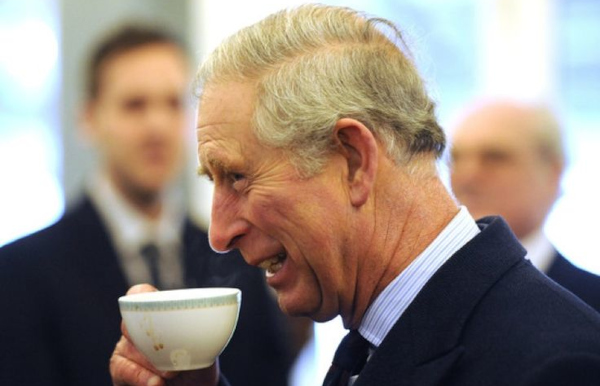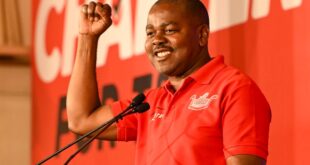The following is the tenth column in a NJAC series on their contribution to Trinidad and Tobago society after the ‘Black Power Revolution’ of 1970:
Reflecting on the 1970 mass people’s movement in Tobago brings to mind Lord Nelson’s calypso All Ah We Is One Family. Tobago’s entry into the T&T revolution brought an unprecedented outpouring of love and togetherness to those marvellous days of People’s Power. Tobago stood firmly behind the cause, with Makandal Daaga, NJAC and the young brothers and sisters who formed Tobago’s leadership.
Tobago’s demonstrations bore a unique ‘family’ flavour of pure love, hospitality and caring. The marchers were cheered on and provided with refreshments as they traversed communities. Persons also fell into the demonstrations as they passed through their communities, thus swelling the numbers.
NJAC’s oneness principle, ‘Be a Brother, Be a Sister’, became the dominant expression of human relationships and the natural order of life on the island.

Even before 1970, many people began building platforms for change in Tobago. These included Bayliss Frederick, Ethelbert Wilson, Dupont Ewing, Allan Richards, Opoku Ware, Lennox Daniel (Tana), William Benjamin (Dingane) and Carlos Williams, to name a few. By 1970, therefore, Tobago was already preparing to act for change.
Tony (Jaja) MacFarlane’s return from the Sir George Williams University in Canada facilitated the formation of a united team, just as the mass demonstrations were taking off in Trinidad. Tobago, therefore, began to take a more organised shape. The massive response of the population in Trinidad inspired the Tobago front to step up its preparations for the ultimate entry of Makandal Daaga and the mass Tobago demonstrations.
On Friday 3 April 1970, the day before the march to Mt Irvine, the chief servant addressed a large meeting at the Scarborough car park. He described Tobago as a forgotten land, lamenting the fact that the absence of any media house, local radio station or newspaper on the island meant that Tobago was only heard of when there was some disaster, like Hurricane Flora. NJAC’s timely intervention regarding this lack of communication resulted in the opening of 610 Tobago and the launch of the first Tobago weekly newspaper.
Brother Daaga also referenced the barbed wire he saw all over the island, which symbolised the foreign ownership of most of the land on the island. He told them that if they did not take serious action, future generations would pay a high price. He called on Tobagonians to put an end to the drooping of the shoulders and the bending of their backs and to stand tall and proud and reclaim command of their own lives and that of their communities.
Makandal Daaga led all the mass demonstrations in Tobago, targeting such key locations as the racist Mt. Irvine Bay Hotel, which denied service to black people. The chief servant called the march to order saying: “Today we leave on a mission, destination unknown.” He left the authorities guessing where his ultimate target would be. After several twists, turns and detours, they realised the demonstration was heading to Mt. Irvine, with only a few minutes to evacuate the hotel.
When some 5,000 demonstrators entered the facilities of the Mt Irvine Bay Hotel & Golf Course on the 4 April 1970, eight years after Independence, the British Union Jack was still being flown above the T&T national flag. This was the level of disrespect and contempt a foreign company was displaying for our nationhood.

One has to wonder how then Prime Minister Dr Eric Williams could have identified so intimately with such a racist institution. He had even delivered the feature address at its opening ceremony the year before and had showered them with lofty superlatives and high praises for their wonderful, path-breaking initiatives. It should be noted, however, that ownership of the hotel was eventually taken over by a Tobagonian who experienced racism at the hotel and swore, at the time, to get them out of Tobago for their deplorable behaviour.
The march to Mt. Irvine also exhibited a humane feature of the movement: the reforming of human lives. Among the demonstrators that day was a gentleman the people called ‘Tony Rum’. Many people even doubted he could make the entire journey. The fact is, that not only did he walk the six miles to Mt. Irvine, but he was so inspired by the experience that he curbed his alcoholic abuse and charted a more productive life.
Much is said of the political, economic and social changes brought by the revolution. Yet we often forget the thousands of lives the revolution touched and transformed for the better. Many persons gave up alcohol abuse, criminal activities, community feuds and other anti-social activities and committed their lives to the cause of a New Society. Imbued with a new vision by the revolution, most of these persons never looked back.
There was also a historic sea demonstration to reclaim the Buccoo Reef for the people of Tobago. The reef was discovered by Tobago’s fishermen. Two fishermen, Sullivan Dillon and Freddie Anthony, enhanced the reef and developed it as an attractive resort. After Princess Margaret spent her honeymoon in Tobago in 1962 and described the reef as the ‘eighth wonder of the world’, however, all hell broke loose. The floodgates opened and tourist visits to Tobago, and the Buccoo Reef, in particular, multiplied a hundred-fold.
The local boat owners who developed the reef, however, were pushed out by foreign concerns that moved in with imposing capital and expensive glass-bottom boats. The local boat owners were unable to compete. NJAC, therefore, organised the local boat owners and fishermen and led a demonstration by sea to the reef and reclaimed it for the people. The flags of the revolution were planted on the reef as an emphatic message to all.
Tobago’s largest and most gruelling demonstration was the one to Charlotteville. It was also the march which exposed the devious and most criminal nature of those who dominated our land.

(Courtesy Embau Moheni/NJAC)
The planned march to Charlotteville had caused grave concern to the power elite. A large number of police reinforcements was brought in from Trinidad, and a devious plot was set in motion with undeniably grave criminal intent. The police were instructed to allow the marchers to reach the top of the Bad Rock precipice, two miles before Roxborough and 16 miles from Scarborough.
The police then pulled in front of the marchers with sirens blaring from their vehicles and ordered that the demonstration go no further. Why had the government instructed the police to allow people to walk 16 miles in the hot sun before stopping the march, instead of doing so at the start in Scarborough? Also, why was the Bad Rock precipice specially chosen as the location for a confrontation?
The most diabolical aspect of the plot, however, was that most of the policemen brought from Trinidad were East Indian. These Indian policemen were to form the frontline attack against an almost all African demonstration. The plot was to say nothing for 16 miles, then block the demonstration and provoke a confrontation at the top of Bad Rock, the most dangerous spot in the entire journey.
Did the authorities really expect 10,000 people to put their tails between their legs and just turn around and walk 16 miles back to Scarborough? No, their intention was to instigate a violent conflict between the Indian policemen and the African marchers, with the expectation that some persons would end up over the 200-foot precipice during the conflict. This they planned to use to drive a permanent wedge between the Indians and Africans in this country.
The demonstrators had no intention of just turning around and walking back to Scarborough. The women were even more militant than the men and began to take the lead in tying wet cloth over their noses as a protection against the expected tear gas.
In the meantime, Brother Daaga took the mic and appealed directly to the Indian policemen, not to allow themselves to be used by the government to destroy the Indian/African unity the movement had been building. He also called on the marchers not to engage the policemen who were their brothers, as that is what the government wanted. He was able to convince the Indian policemen that they had been brought to Tobago to create unnecessary bloodshed. The police then stood down and allowed the demonstration to proceed.

All along the route, there was a constant supply of water, food, fruits and an abundance of Crix biscuits. At Charlotteville, the demonstrators were warmly welcomed by the community. Pots of food were prepared on the beach and there were lots of refreshments for the thousands who had assembled in Charlotteville on that historic occasion.
One lesson we must never forget from this great march to Charlotteville is how expendable human life is to the ‘power elite’ in their pursuit of nefarious schemes for human domination and exploitation. In the words of the people’s calypsonian Brother Valentino to the power elite: “Your life is not worth 50 cents.”
A major issue facing Tobagonians, and which dominated the attention of the revolution, was that of land ownership. Over 70% of Tobago’s best land was owned either by foreign concerns or by the local power elite. What made it more critical was the fact that Tobago was heavily dependent on agriculture for its survival. Demands for land for the people was a focal point of the Tobago campaign, which forced the government to acquire 13 of the major estates on the island.
The Tobago campaigns also registered some early victories. One of these, stemming from an initiative of the chief servant, resulted in a 100% rise in salaries of all store workers in Scarborough. Also addressed were the problems of the sexual abuse of workers by businessmen and the use of teenagers as sex objects and striptease performers in night clubs and hotels.
One such night club owner came out to the microphone and apologised to the thousands as they marched in front of his night club at Bacolet and promised to stop the practice. He was good to his word and never hosted striptease again. Generally, workers in Tobago began to enjoy more respect and better conditions after NJAC’s intervention in 1970.
Many youths also benefited from the opening to the public, the previously elitist Calder Hall lawn tennis courts. This initiative produced two national champions, Anthony Morean (who emerged as the youngest winner of a national tournament at the age of 17, when he broke the long reign of Alan Price) and Orville Adams, the 1980 and 1982 champion.
Anthony Morean was also the 1974 winner of the first of at least 10 lawn tennis scholarships to attend university, which was influenced by the opening of the Calder Hall courts to the community in 1970. Other winners included Larry Yearwood (1977), Brian Yearwood (1979), Orville Adams and Sula Habib (1981), Ian Yearwood and Carlene Rodriguez (1982), and Shirley Alexander, Selthea Matthews and Shirley Williams.

When the state of emergency (SOE) was declared on 21 April 1970, a large percentage of the detainees were from Tobago. The calling of the SOE was not a surprise, as the talk was in the air, and we knew it was more a question of when than if. There was even a dinner meeting at the Shangai Restaurant in Calder Hall dubbed ‘The Last Supper’ on Sunday 19 April, two days before the declaration of the state of emergency. There was an air of apprehension, with members preparing for any eventuality. At the end of the dinner, they departed with hugs and blessings.
The mass movement led by Brother Makandal Daaga and NJAC did much to give the people of Tobago a strong sense of ownership of their island and the desire to control their destiny. Without the quest for people’s power in 1970, there could not have been a Tobago House of Assembly 10 years later in 1980. Above all, the revolution gave Tobagonians a sense of equality and justice. The movement taught them that the pursuit of justice was both their right and their duty.
“There is plenty law, and yet still there is a struggle for justice. Anytime you leave out the common man from the process of law, there would never be Justice.” – Chief Servant Makandal Daaga.
Want to share your thoughts with Wired868? Email us at editor@wired868.com.
Please keep your letter between 300 to 600 words and be sure to read it over first for typos and punctuation.
We don’t publish anonymously unless there is a good reason, such as an obvious threat of harassment or job loss.
 Wired868 Wired868 for smart sport news and opinion
Wired868 Wired868 for smart sport news and opinion







I am reliably informed that this article is not a correct reflection of what actually happened during the period as is now displayed here.
It is quite necessary that it be corrected. Historically, the information must be related as it happened, don’t you think?
Thank you.
Dr. Doris Charles Frederick
St. Vincent and the Grenadines
Thank you for this.